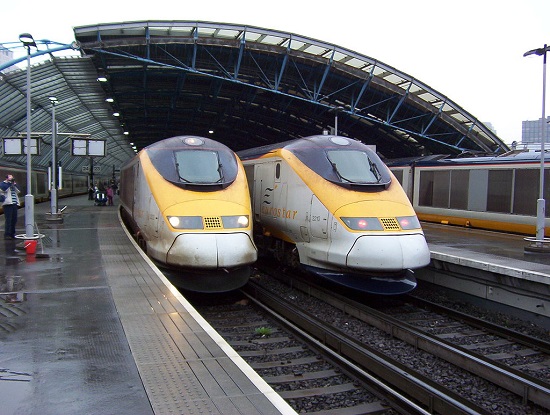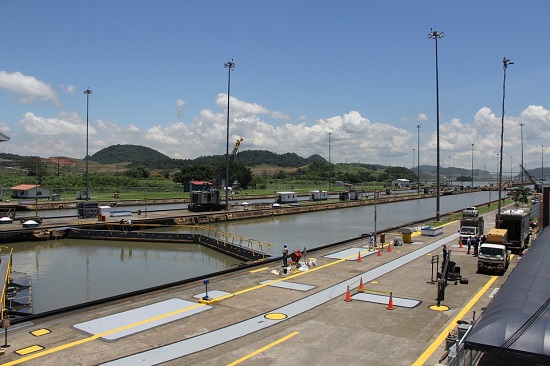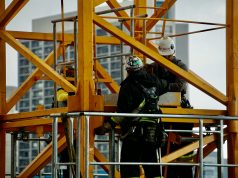The engineering accomplishments of humankind have always fascinated and amazed us, especially in the past century when the rise of new technologies has made impossibly ambitious projects achievable.
Here are just a few of the most incredible megastructures from around the world, each of which has had a huge impact in one way or another.
The Channel Tunnel
Although the Channel Tunnel was not completed until 1994, the first proposal of an underground link between the UK and France was made as early as 1802. Infact the Channel Tunnel Company was formed in 1875 and a host of trials and geological surveys were conducted throughout the 19th century, showing the level of eagerness that existed for this project.
From 1988 it took two years for the tunnelling teams to break through and a further four to make each of the tunnels operational for rail transport purposes. 15,000 people worked simultaneously on the tunnelling operations at the height of construction and the original budget was exceeded by 80 per cent because of the complications encountered.
The distance travelled underground by the tunnel is 31 miles or just over 50 kilometres. It is not the longest rail tunnel in the world; that honour goes to Switzerland’s Gotthard Base Tunnel. However, no other tunnel passes beneath the surface of the sea for a greater distance than the Channel Tunnel, which means that it remains a compelling feat of engineering to this day.

Two Eurostar trains prepare to travel the span of the Channel Tunnel.
The Golden Gate Bridge
In the eight decades since it was first opened, the Golden Gate Bridge has become an icon of international engineering, even if its size and scope have since been dwarfed by other projects elsewhere in the world.
The central span of this suspension bridge stretches for over 1.2km between the two supports, each of which measures 227 metres in height. As with the majority of the megastructures, we will cover here, the idea of the bridge was stewing for a long time before it was actually put into action.
At first, the proposal made by engineer Joseph Strauss was for a cantilever bridge that would allow ships to pass underneath without being impeded. However, eventually, a suspension design using wire rope was selected because developments in the use of materials allowed it to be made on a much larger scale.
Even the colour of the Golden Gate Bridge was going to be quite different from the vibrant orange-red; a yellow and black combination had been put forward as a means of making the bridge stand out from its surroundings to avoid issues with ships hitting its supports or central span.
With an unadjusted budget of $35 million, equivalent to half a billion dollars today, the Golden Gate Bridge was actually finished earlier than planned and managed to cost less than anticipated. This is a rare case in which efficient construction techniques made a positive impact on a project of this size.

The sun sets over the glorious expanse of the Golden Gate Bridge.
The Hoover Dam
While the Golden Gate Bridge is designed to help humans soar above the water, the Hoover Dam is intended to contain it. Finished just a year earlier than its Californian counterpart, the dam is one of the many initiatives funded as part of FDR’ efforts to curb the impact of the Great Depression on American society.
Almost 100 people were killed during the construction of the dam; a reminder of the fact that safety was not as big of a concern almost a century ago. Aside from its human cost, the total budget for the dam was $49 million at the time, or a little over $660 million when inflation is taken into account.
With close to 2.5 million cubic metres of concrete poured to construct the damn, subsequent testing in the 1990s found that the structure was becoming stronger with time as the material continued to cure and set. This suggests that the Hoover Dam will continue to be both a practical structure as well as a significant attraction for years to come, with more than a million visitors recorded annually at the moment.
The power generated by the turbines built into the dam is used by businesses and households in the surroundings states of Arizona, Nevada and California. Since it is a hydroelectric source of energy, it is entirely renewable and surprisingly eco-friendly for something which was built long before the modern green movement was conceived.

The towering majesty of the Hoover Dam.
The Panama Canal
Shipping has always been a costly, risky and time-consuming process, yet it has been essential to the development of the modern world and the facilitation of international trade routes. One of the more impressive and challenging projects ever undertaken to speed up sea transport is the Panama Canal, which since 1914 has allowed huge vessels to travel between the Pacific and Atlantic oceans, cutting up to 5000 miles off journeys.
Each year around 15,000 ships pass through the canal, with almost a million having sailed its waters since it was opened.
Historic records suggest that the suggestion of creating a canal in Panama was made more than 500 years ago, although it took centuries and many failed attempts before it was actually achieved.
The length of the canal itself sits at around 82 kilometres or 51 miles. Vessels take an average of a little over 11 hours to complete their journey from one side to the other and the creation of the canal also necessitated the excavation of an artificial lake, as well as a host of other structures to accommodate its features.
One particularly impressive aspect of the canal, aside from its length, are the locks which allow vessels to pass between different water levels along the way. The gates which hold back the waters at each lock are made of steel and are two meters thick and 20 metres high. These have increased in size over time in order to ensure that bigger freighters and tankers could be accommodated.

The rigorously controlled Panama Canal with its huge lock gates.
RMS Queen Mary 2
From a canal that is designed for the largest ships the world has seen, to the vessel that currently holds the title of being the biggest ocean liner created to date, the RMS Queen Mary 2 holds a number of unique claims to fame.
Put into service in 2004, the ship measures 345 metres long and tips the scales at almost 150,000 tonnes. It cost around 800 million to construct and has enough room onboard for more than 4,000 people.
No other passenger ship makes the journey across the Atlantic between the UK and the US, which puts RMS Queen Mary 2 in an intriguing position. The challenges involved with making this crossing mean that the engineers that designed the ship needed to account for additional structural wear and tear with resilient material choices, hence the fact that 40 per cent more steel was required to complete it when compared with a cruise liner of equivalent capacity.
All of the space onboard is not just taken up by rooms for passengers; there are also a number of restaurants, a functional theatre, a casino and five pools, amongst other leisure options.

Setting the bar for size as well as luxury, the RMS Queen Mary 2 is an impressive achievement.
Burj Khalifa
If you are looking for a record-breaking feat of engineering, then the Burj Khalifa in Dubai is sure to satisfy your needs. It is not only the tallest building in the world, standing 828 metres above the opulent expanse of the city around it, but it is also home to elevators that travel farther than anywhere else on the planet, as well as more stories than any other structure.
It took workers four years to build the Burj Khalifa and there are a number of intriguing quirks that are a direct result of its height. This includes the fact that the air in the upper reaches of the building is actually far cooler and less contaminated by dust and pollution simply because it comes from higher in the atmosphere. Meanwhile, the process of cleaning the 24,000 windows that wrap the exterior takes four months to complete and is thus effectively a never-ending necessity.

The Burj Khalifa defies gravity and darkness
330,000 cubic metres of concrete went into the building of the Burj Khalifa, along with an impressive 55,000 tonnes of steel. Estimates suggest that in total around 22 million working hours were taken up in its completion and the architects even took into account the inclusion of floors specifically designed to provide respite for people in the event of an emergency. Walking down from the higher reaches of the tower would be both physically taxing as well as psychologically challenging if the elevators were taken out of action for whatever reason, hence the need for these seemingly excessive precautions.
Megastructures like this continue to be developed and delivered around the world, with each acting as a testament to human ingenuity and determination in the face of steep challenges. Future generations of engineers have been inspired by the work of those that came before them and always will be.














